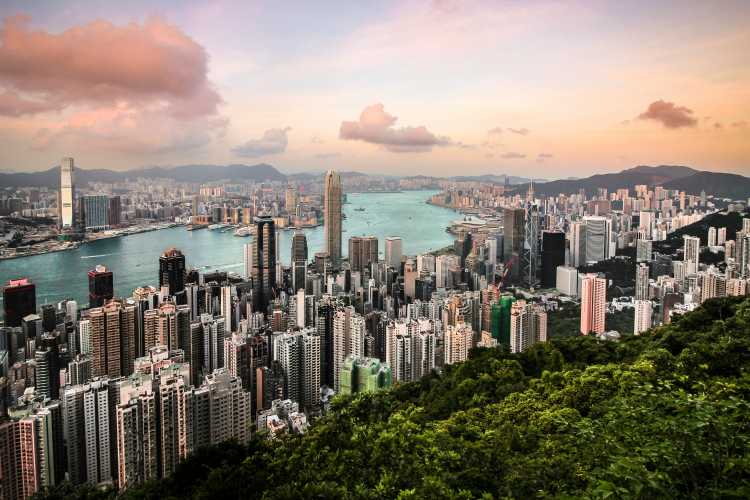
The narratives on Chinese economy’s future are both complex and compelling. Official statistics show a GDP growth rate of 5.2% last year which is robust for an economy of its size. Yet, a survey of its magnificent cities — vacant storefronts and quiet restaurants — tell a different story which is at odds with official GDP figures.
This discrepancy is not just a matter of perception. It is becoming a pivotal concern for businesses eyeing expansion in China. The American Chamber of Commerce in China found a modest uptick in companies planning to increase their investments, driven partly by expectations of a brighter economic horizon in 2024. However, this optimism is tinged with caution, reflecting a broader debate over the accuracy and implications of China’s growth figures.
READ | India’s climate change woes push healthcare to the brink
Critics suggest that the real growth figure might be closer to 1.5%, pointing to a general economic malaise that the bright spots, such as electric vehicle production, cannot fully dispel. This scepticism is mirrored in the challenges of measuring growth in a politically charged environment, where Beijing is keen to project a narrative of strength and resilience.
The International Monetary Fund (IMF) described China’s post-pandemic recovery as subdued, attributing it to struggles in the property sector and weak exports and investment, even forecasting a slowdown for 2024. This prompted a defensive response from Chinese officials, urging the IMF to offer a more appropriate forecast that could bolster confidence both within China and internationally.
So, what is really happening with China’s economy? The official growth rate, while a historic low, still signifies a significant achievement for an economy as large and as developed as China’s. The expectation was for a more vigorous rebound post-2022—a year marred by COVID lockdowns and travel restrictions that battered service industries and exacerbated a property sector slowdown.
Despite a strong start in 2023, the year required increasing government intervention to maintain momentum. A surge in consumption, driven by pent-up demand, accounted for much of the growth, yet consumer confidence lagged behind pre-pandemic levels. Business and market confidence reflected this uncertainty, with China’s CSI 300 stock index experiencing declines, further suggesting a tempered growth narrative.
Amid this backdrop, Beijing’s narrative remains one of control and progress, even as it faces criticism over the transparency and accuracy of its economic data. Some analysts argue that China might be overestimating its GDP to meet targets, a contention that adds fuel to the debate over the true state of China’s economic health.
Looking ahead, the IMF’s forecast of 4.6% growth for 2024, with a gradual slowdown expected thereafter, paints a cautious picture. Yet, China counters this narrative by highlighting its untapped potential, from an aging yet more educated population to ongoing urbanisation and significant investments in science and technology.
Chinese economy: Venturing into new frontiers
As we discuss the weaknesses of its economy, China is boldly charting a course towards innovation-driven growth. The country’s ambition to dominate in state-of-the-art technologies — intelligent connected vehicles, quantum computing, and advanced robotics—underscores a strategic pivot towards fostering new productive forces. This focus on cutting-edge technology and industrial upgrading is not just a policy mantra but a concerted effort to redefine China’s economic blueprint.
Local governments, from Hefei to Henan and Xiamen, are spearheading this transformation, channelling investments into new energy vehicles, information technology, and biopharmaceuticals. These initiatives aim not just to elevate China’s industrial capabilities but to position the country at the forefront of global innovation.
China’s resolve to nurture these new productive forces is evident in its thriving high-tech industries and strategic emerging sectors, now integral to its GDP. With ambitious targets set for the coming years, China is poised for a significant leap in innovation and productivity.
Investments in research and development have surged, reflecting China’s commitment to science and technology as the backbone of its future growth. The country’s climb up the global innovation index and the burgeoning number of top sci-tech talent underscore a growing prowess in shaping the frontiers of global technology.
China’s economic slowdown has ripple effects across the globe, impacting international trade dynamics. As its reliance on traditional exports wanes, concerns over slowing global growth and trade protectionism rise. However, China’s Belt and Road Initiative (BRI) offers a glimpse into its ambitions for reshaping trade landscapes. By investing in infrastructure development across continents, China aims to create new trade routes and expand its economic influence. While the BRI’s long-term impact remains uncertain, it underscores China’s strategic intent to redefine its role in global trade.
Amid the confusion over China’s economic transformation, businesses must adopt agile and resilient strategies. Understanding the nuances of regional differences within China and conducting thorough due diligence are crucial. Embracing digitalization and e-commerce opportunities can unlock new markets and customer segments. Ultimately, success in the evolving Chinese market will hinge on adaptability, innovation, and a deep understanding of the country’s economic trajectory.
China’s economy is at a crossroads, marked by challenges but also brimming with opportunities. The juxtaposition of cautious optimism and strategic ambition reflects a nation in transition, seeking to redefine its place in the global economic order through resilience and innovation.
As China endeavours to balance the scales between traditional growth models and new economic drivers, the world must watch closely. The success of this transition will not only shape China’s economic future but also influence global economic dynamics, making it a story of global significance.
Anil Nair is Founder and Editor, Policy Circle.

